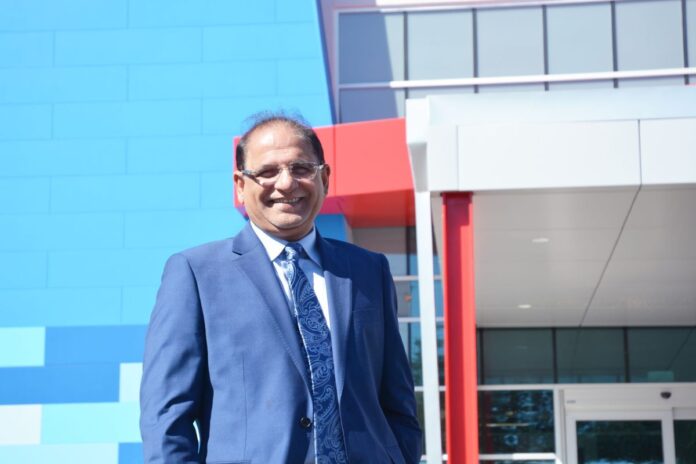HARLINGEN — The largest free-standing emergency room in South Texas on the hottest real estate corner in the Rio Grande Valley should open for patients next month.
Parent company Exceptional Healthcare’s medical center called the Exceptional Emergency Center at Stuart Place Road and I-2/U.S. Expressway 83 is nearly complete, awaiting a final state inspection on Oct. 24 with hopes of opening Nov. 1.
The owners who invested $7 million to $8 million in rehabilitating the old AT&T call center at 6902 W. Expressway 83 have scheduled a ribbon-cutting for Nov. 9 and an open house for Nov. 18.
The west Harlingen location is one of several planned Exceptional Healthcare emergency clinics up and down the Valley. Another of its clinics is being constructed in Brownsville along Alton Gloor Boulevard and is expected to begin seeing patients in February.
Dr. Kazim Hussain, chief of emergency medicine at Valley Baptist Medical Center in Brownsville, is general manager and a co-owner of Exceptional Emergency Care.
“Quality-wise it’s very different than a regular hospital,” he said.
Hussain said most patients who will use the emergency medical center in Harlingen will have health insurance, and many are merely seeking to speed up the wait time to see a doctor and be treated.
Others, he said, will come for a more personal approach for patients that is something larger medical treatment facilities often are unable to provide.
“Since it is going to be select, with very few people coming in here, they will be pampered like VIP treatment, they will be literally getting the VIP treatment,” he added. “I have one-to-one nurses and doctors there, and if I have two or three patients, I will be sitting with them and chatting with them, you will get the best of the care — more personalized.”
Or, as Exceptional Healthcare marketing director Syed Ali put it, “it will be red-carpet treatment, and anybody can stand on the red carpet.”
Hussain said even though he works for Valley Baptist, the emergency treatment centers are not competitive with the core role of larger hospitals.
“I have been here since ‘99, and I’m the chairman of the Valley Baptist Emergency Department, so we have an understanding with Valley Baptist,” Hussain said.
Hussain said the tight-knit families of the Rio Grande Valley resemble his native Pakistan.
“When I went to work in the ER I would see the people, the relatives coming in, their brother or sister or parents and that was very impressive for me,” he said. “All the family gets involved and they take care of them. It kind of came back to me like my home.”
At the Harlingen facility, Hussain said doctors would treat everything except major trauma cases. While the emergency center will not be receiving any ambulances, he said they may dispatch them to larger hospitals if doctors determine a patient needs treatment beyond the capabilities of the emergency center.
He said the center will perform minor surgeries, EKGs, CAT scans and ultrasounds. He said doctors also will be able to prescribe any medications a patient requires.
The Harlingen facility will be open 24 hours a day, seven days a week, and employ between 30 and 40 full- and part-time staff.
The addition of the emergency medical care center at the intersection of Stuart Place Road and I-2/Expressway 83 is just the latest big investment in the area.
Across the street, a $6.8 million commercial plaza shell at Stuart Place Crossing is being constructed, as is a new Texas Regional Bank headquarters. Cheddar’s Scratch Kitchen restaurant recently opened there, too.
For Hussain, the bottom line for his new emergency center will be a personalized experience few patients have experienced.
“The people will be called the next day, ‘Hey, how’s it going? Is everything OK? Do you need anything, any help?’” Hussain said.
“This is not traditionally done,” he added. “I tell you, nobody does it.
“But I’m going to do it,” Hussain said.
The fastest-growing medical treatment area in the U.S., estimated at $15 billion annually.
Clinics are designed to treat non-life-threatening ailments.
Once dismissed as “Doc in a Box,” urgent care capitalizes on shifting needs and preferences in obtaining health care. High health insurance deductibles can mean urgent care treatment is often more affordable.
Urgent care users cite convenience, with doctors staffing clinics on weekends and nights. Wait times are typically a half-hour or less.
Source: American Academy of Urgent Care Medicine




